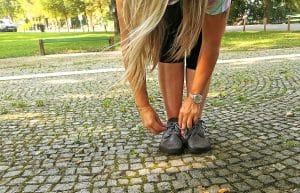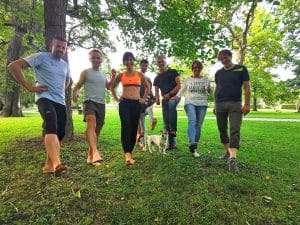About foot health, News
BAREFOOT FOOTWEAR: How to start wearing them?
Before we dive deep into the barefoot footwear world, we need to answer the most basic question: Why would anyone even choose barefoot shoes over the regular ones?
The answer here is very simple: They are created to support the feets’ natural features as the main attributes of barefoot shoes are extremely thin, with a flexible sole, and with a wider front part that enables free movement of toes. Proalp spent over a decade researching feet’s health, which brought us to the knowledge of designing the ideal barefoot shoes out of natural materials. While designing, we took into consideration the feedback of our customers, as well as the findings of foreign podiatric research.
The key points when it comes to transitioning to barefoot footwear are graduality, patience, and observation. And these points will be explored further in this article.

1. START GRADUALLY
Wearing barefoot shoes, the feet slide into a different position than they were used to taking before, which affects the walking movement as well. That kind of walking demands much more work from the feet, which sometimes displays in the form of sore muscles, exhaustion, or at least an unusual feeling. However, walking in this kind of shoes brings with it the feeling of freedom and experiencing better contact with nature. With aging, the influence of unhealthy footwear on your feet increases as well, which makes the adjustments to the new type of footwear more difficult. The main reason for that is wearing shoes with heels (any kind of) regularly. Heeled shoes shorten and contract the Achilles tendon; while wearing shoes with zero drops gradually extend it slowly back. This is a slow process, that can be accompanied by tension and a little bit of sore feeling, which pays out in the form of healthier feet and legs.
The start of a transition to barefoot shoes must be slow. For people that are completely unused to walking barefoot and have worn only high heel shoes, we recommend, they start with wearing barefoot shoes an hour a day, which they gradually extend. While doing that, observe your new movement: your walk, and gradually intensify the use of the shoes when you see the feet are getting stronger. If needed, taking a break every now and then is encouraged.
2. TRANSITIONING FOOTWEAR
Human feet are a very sensitive body part, that can sense the grounds they walk on and accordingly adjust their gait. How fast you will get used to barefoot shoes, depends greatly on the type of footwear you were used to wearing before. After using shoes with very thick soles, our feet lost a lot of their natural features, which can make wearing barefoot shoes a little uncomfortable at the beginning.
Another great way to start your transition to barefoot shoes is by wearing healthy footwear with a thin sole (1 – 1,5 cm). The best transition shoes have the heel part raised to the level of the toes, which means the heel drop is insignificant as possible. The front part should be much wider than the shoes you regularly wear. That way, the natural functions of the feet are activated. All transition shoes can be found also in our online store (transition shoes for women; transition shoes for men).
3. GIVE YOURSELF ENOUGH TIME TO ADJUST TO BAREFOOT FOOTWEAR
Not many young people experience foot problems as the effect of unhealthy footwear takes time to show. As well as unhealthy shoes, the natural, barefoot shoes need some time to make their effect noticeable. The feet need time to regain their strength and adjust. Patiently observe the reaction of the body, and slowly the changes will be noticeable as well.
4. BUY YOURSELF BAREFOOT FOOTWEAR IN LARGER SIZE
A lot of customers, especially the ones that have never worn barefoot shoes before, choose a pair that fits just perfectly. Even though these shoes prove to be very comfortable, most of their users find them too small over some time. While wearing barefoot shoes, the foot is much more active, than when wearing usual footwear. The toes are moving and grabbing the ground they walk on, which is enabled by a wide toebox and flexibility. That way, the strength of the foot improves. Soon the feet need larger shoes, with more space to move freely. For that reason, we always advise our customers to buy a little bit larger shoes that have at least a centimeter of free space in front of the toes.
5. OBSERVE YOURSELF
While walking, we are used to moving our feet the way we first hit very strongly our heel to the ground, because usual shoes with strong and raised heels allow only that kind of foot movement. This kind of movement is a very big deviation from our natural movement and it majorly affects the whole foot’s health. Wearing barefoot shoes, it can make walking much healthier as the sole is thinner and more flexible. Starting barefoot, we suggest you choose comfortable ground and wear them when you are not stressed. That way you can reconnect with nature and the grounds you’re walking on mentally, as well as physically.

6. BE COMPLETELY BAREFOOT
Being completely barefoot, without any shoes on is not only liberating but also very healthy and makes the transition to barefoot much easier. Walking barefoot makes your feet and muscles stronger.
7. EXERCISE YOUR FEET AND MASSAGE THEM
Regular feet exercise and massages make your feet stronger and healthier. Some foot strength exercises can be found here.